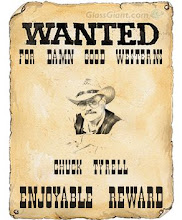At 19, Mami Sato headed a varsity cheerleader squad at Waseda, Japan’s top private university. One summer day she hurt her ankle landing from a high lift and thought she’d sprained it. The ankle never healed. Not in a week, not in a month. But Mami was a grin-and-bear-it kind of athlete, so it was December before the pain got so intense she went to a local clinic.
“I thought it was a sprain,” she said to the doctor, “but maybe it’s a stress fracture.”
The doctor had her ankle X-rayed. His face was stern when he called her in to show her the film. The end of her ankle bone had dissolved. “You need treatment at a specialized hospital,” the doctor said. “Go to the National Cancer Center.”
Mami was diagnosed with osteosarcoma -- bone cancer.
“We’ll start you on chemotherapy right away,” the doctors said. “Nine months to a year.”
“You mean I have to stay out of school for a year?” Mami asked.
“Yes, and we won’t be able to save your right leg.”
“. . . .”
“There are really good prosthetics now. You’ll do fine,” they said. “You’ll even be able to participate in sports.”
Sports? Mami clung to the spark of hope brought by those words. She could be an athlete. She could beat this thing.
After three months of chemo, Mami lost her right leg to the surgeon’s knife. They left about four inches below the knee. Then six more months of chemo.
While in the chemo ward, Mami learned to stand up again. Then to walk. Frustrated by her seeming lack of progress, she’d cry into her pillow at night. I want to walk. I want out of this room. I want to go out into the fresh air.
The next day she returned to the rehabilitation room with renewed determination. Nearly ten months after she walked into the National Cancer Center, she walked out.
She learned to swim. At the pool, she saw a poster for the Tokyo Sports Center for the Disabled. I’m one of them, Mami thought, but can I run?
Through the center, Mami was introduced to Fumio Usui, Japan’s foremost maker of prosthetics for enabled athletes. She joined Usui’s Health Angels.
“Usui Sensei made me a prosthetic,” Mami said, “and I ran 50 meters . . . well, it was closer to a walk, but I made it.”
By the time she could actually run, Mami’s hair had grown back in. “I think my body remembered that I’d been a swimmer and a runner,” she said. “Sports give you tremendous power.”
As an extension of her sprinting, Mami began broad jumping. One of the staff members of the Sports Center had been a broad jumper and he coached her.
Mami entered her first track meet the summer after she left the hospital. She ran the 100 meter dash and broad jumped. “I only jumped a little over three meters,” Mami said with a smile, “but the length didn’t matter. I competed, and that thrilled me. I decided to see how far I could really jump, and I found myself wanting to compete in the Paralympics.”

Japan’s Paralympic trials were held in March 2004. To qualify, Mami had to jump 3 meters 55 centimeters. Up to that moment, her best jump was 3.44, but on the very first leap, she set a personal best distance of 3.65. Mami qualified to represent Japan in Athens.
At Athens, Mami failed to make the second round. But back in Japan, she continued to extend her jumping range. She’d already set her sights on the next Paralympics in Beijing. This time, in the qualifying track meet, Mami jumped 4.46 meters, a personal best and a para-long jump record in Japan. She garnered her ticket to Beijing.
Mami didn’t win or place in Beijing. And the Japanese para-long jump record has gone to a rival jumper. “I’ll be at London,” Mami said. “And I aim to be back on top.”
# # #

No comments:
Post a Comment